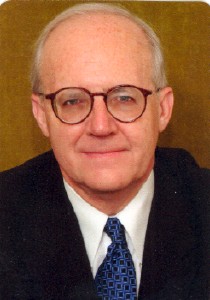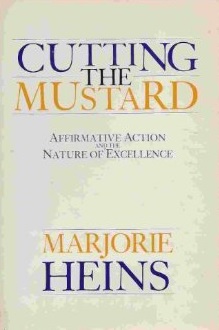
The terms moot, mootness and moot point are used in both in English and American law, although with different meanings.
Reverse discrimination is a term often used by those in a dominant or majority group to describe discrimination against members of a dominant or majority group, in favor of members of a minority or historically disadvantaged group. Groups may be defined in terms of ethnicity, gender identity, nationality, race, religion, sex, or sexual orientation.
Regents of the University of California v. Bakke, 438 U.S. 265 (1978) was a landmark decision by the Supreme Court of the United States which involved a dispute of whether preferential treatment for minorities can reduce educational opportunities for whites without violating the Constitution. It upheld affirmative action, allowing race to be one of several factors in college admission policy. However, the court ruled that specific racial quotas, such as the 16 out of 100 seats set aside for minority students by the University of California, Davis School of Medicine, were impermissible.
Grutter v. Bollinger, 539 U.S. 306 (2003), was a landmark case of the Supreme Court of the United States concerning affirmative action in student admissions. The Court held that a student admissions process that favors "underrepresented minority groups" does not violate the Fourteenth Amendment's Equal Protection Clause so long as it takes into account other factors evaluated on an individual basis for every applicant.
Gratz v. Bollinger, 539 U.S. 244 (2003), was a United States Supreme Court case regarding the University of Michigan undergraduate affirmative action admissions policy. In a 6–3 decision announced on June 23, 2003, Chief Justice Rehnquist, writing for the Court, ruled the University's point system's "predetermined point allocations" that awarded 20 points towards admission to underrepresented minorities "ensures that the diversity contributions of applicants cannot be individually assessed" and was therefore unconstitutional.
The Equal Protection Clause is part of the first section of the Fourteenth Amendment to the United States Constitution. The clause, which took effect in 1868, provides "nor shall any State ... deny to any person within its jurisdiction the equal protection of the laws." It mandates that individuals in similar situations be treated equally by the law.

Proposition 209 is a California ballot proposition which, upon approval in November 1996, amended the state constitution to prohibit state governmental institutions from considering race, sex, or ethnicity, specifically in the areas of public employment, public contracting, and public education. Modeled on the Civil Rights Act of 1964, the California Civil Rights Initiative was authored by two California academics, Glynn Custred and Tom Wood. It was the first electoral test of affirmative action policies in North America. It passed with 55% in favor to 45% opposed.
District of Columbia Court of Appeals v. Feldman, 460 U.S. 462 (1983), was a case decided by the United States Supreme Court in which the Court enunciated a rule of civil procedure known as the Rooker-Feldman doctrine. The doctrine holds that lower United States federal courts may not sit in direct review of state court decisions.

Danny Julian Boggs is an American attorney and a senior United States circuit judge of the United States Court of Appeals for the Sixth Circuit. He was appointed to the court in 1986 and served as its Chief judge from September 2003 to August 2009. Boggs was on the short list of President George W. Bush's candidates for the U.S. Supreme Court.

Hopwood v. Texas, 78 F.3d 932, was the first successful legal challenge to a university's affirmative action policy in student admissions since Regents of the University of California v. Bakke. In Hopwood, four white plaintiffs who had been rejected from University of Texas at Austin's School of Law challenged the institution's admissions policy on equal protection grounds and prevailed. After seven years as a precedent in the U.S. Court of Appeals for the Fifth Circuit, the Hopwood decision was abrogated by the U.S. Supreme Court in 2003.

The Michigan Civil Rights Initiative (MCRI), or Proposal 2, was a ballot initiative in the U.S. state of Michigan that passed into Michigan Constitutional law by a 58% to 42% margin on November 7, 2006, according to results officially certified by the Michigan Secretary of State. By Michigan law, the Proposal became law on December 22, 2006. MCRI was a citizen initiative aimed at banning consideration of race, color, sex, or religion in admission to colleges, jobs, and other publicly funded institutions – effectively prohibiting some affirmative action by public institutions based on those factors. The Proposal's constitutionality was challenged in federal court, but its constitutionality was ultimately upheld by the Supreme Court of the United States.

Affirmative action in the United States is a set of laws, policies, guidelines, and administrative practices "intended to end and correct the effects of a specific form of discrimination" that include government-mandated, government-approved, and voluntary private programs. The programs tend to focus on access to education and employment, granting special consideration to historically excluded groups, specifically racial minorities or women. The impetus toward affirmative action is redressing the disadvantages associated with past and present discrimination. Further impetus is a desire to ensure public institutions, such as universities, hospitals, and police forces, are more representative of the populations they serve.
Constitutional colorblindness is an aspect of United States Supreme Court case evaluation that began with Justice Harlan's dissent in Plessy v. Ferguson in 1896. Prior to this, the Supreme Court considered skin color as a determining factor in many landmark cases. Constitutional colorblindness holds that skin color or race is virtually never a legitimate ground for legal or political distinctions, and thus, any law that is "color-conscious" is presumptively unconstitutional regardless of whether its intent is to subordinate a group, or remedy racial discrimination. The concept, therefore, has been brought to bear both against vestiges of Jim Crow oppression, as well as remedial efforts aimed at overcoming such discrimination, such as affirmative action.
Sheff v. O'Neill refers to a 1989 lawsuit and the subsequent 1996 Connecticut Supreme Court case that resulted in a landmark decision regarding civil rights and the right to education. A judge finally approved a settlement of the matter January 10, 2020.
Fisher v. University of Texas, 570 U.S. 297 (2013), also known as Fisher I, is a United States Supreme Court case concerning the affirmative action admissions policy of the University of Texas at Austin. The Supreme Court voided the lower appellate court's ruling in favor of the university and remanded the case, holding that the lower court had not applied the standard of strict scrutiny, articulated in Grutter v. Bollinger (2003) and Regents of the University of California v. Bakke (1978), to its admissions program. The Court's ruling in Fisher took Grutter and Bakke as given and did not directly revisit the constitutionality of using race as a factor in college admissions.

Cutting the Mustard: Affirmative Action and the Nature of Excellence is a 1987 non-fiction book by civil libertarian and United States lawyer Marjorie Heins about the Equal Protection Clause of the Fourteenth Amendment to the United States Constitution and its relationship to affirmative action and sexism. Heins discusses the case of Nancy Richardson, dean of student affairs at the Boston University School of Theology, who was removed from her position by the school's administration in 1981. Heins represented Richardson in an unsuccessful lawsuit against Boston University for wrongful termination and sexism. Cutting the Mustard recounts the case, interspersing reflections on the lawsuit with a discussion of relevant case law, decisions by the Supreme Court of the United States related to affirmative action and multiple criticisms of contradictory court decisions in affirmative-action cases.
Students for Fair Admissions, Inc. v. President and Fellows of Harvard College and Students for Fair Admissions, Inc. v. University of North Carolina are a pair of lawsuits concerning racial discrimination in affirmative action programs in college admissions processes. The first case involves Harvard University's undergraduate admissions process which is claimed to discriminate against Asian American applicants, while the second centers on the University of North Carolina's use of socioeconomic factors in administration, which is claimed to incorporate race and violate Title VI of the Civil Rights Act of 1964. Both cases seek review of the Supreme Court decision Grutter v. Bollinger (2003) which validated the use of affirmative action programs in college admissions as long as race is not used as the sole deciding factor.
Edward Jay Blum is a conservative legal strategist known for his activism against affirmative action based on race and ethnicity. He connects potential plaintiffs with attorneys who are willing to represent them in "test cases" which he tries to use to set legal precedents. He is the director and sole member of the Project on Fair Representation, which he founded in 2005. According to its website, the Project focuses specifically on voting, education, contracting, employment, racial quotas, and racial reparations. Since the 1990s, Blum has been heavily involved in bringing eight cases to the United States Supreme Court. He is a key figure in the Students for Fair Admissions v. President and Fellows of Harvard College lawsuit.
Fisher v. University of Texas, 579 U.S. 365 (2016) is a United States Supreme Court case which held that the Court of Appeals for the Fifth Circuit correctly found that the University of Texas at Austin's undergraduate admissions policy survived strict scrutiny, in accordance with Fisher v. University of Texas (2013), which ruled that strict scrutiny should be applied to determine the constitutionality of the University's race-conscious admissions policy.

Coalition for TJ v. Fairfax County School Board is a pending lawsuit challenging changes to Thomas Jefferson High School for Science and Technology's admissions policy which were made in 2020. The Coalition for TJ, a local single-issue advocacy group, alleges that the changes that Fairfax County Public Schools made to the school's admission policy unfairly discriminate against Asian Americans. After the United States District Court for the Eastern District of Virginia ruled in favor of the Coalition for TJ in February 2022, FCPS appealed the ruling to the United States Court of Appeals for the Fourth Circuit, where the lawsuit is currently pending. The appeals court has issued a stay on the district court's ruling, preventing it from having any effect on TJ's admission policy until the appeals court issues its decision.








